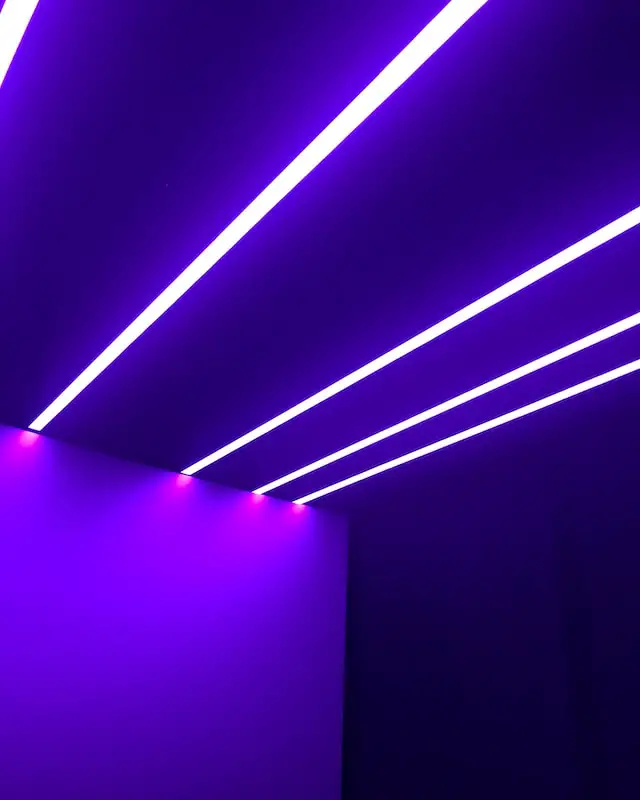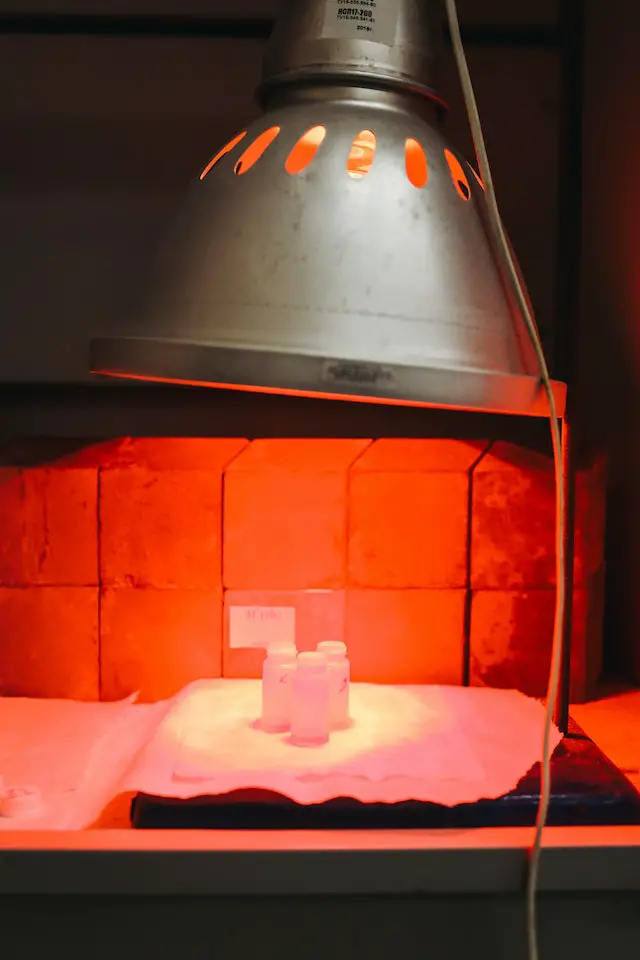Infrared and ultraviolet lights are two types of light waves that have distinct characteristics and uses. While both types of light are invisible to the human eye, they have different wavelengths and frequencies that affect how they interact with matter.
What is infrared light?
(Image by PublicDomainPictures from Pixabay )

Infrared (IR) light is a type of electromagnetic radiation that has longer wavelengths than visible light. These wavelengths range from around 700 nanometers to one millimeter, and are invisible to the human eye. However, we can feel them as heat – this is why IR radiation is often referred to as “heat radiation”.
IR rays are emitted by all warm objects, including our own bodies! This makes infrared technology incredibly useful in various applications such as thermal imaging cameras and remote controls. In fact, almost every electronic device with a remote control uses IR technology.
Furthermore, infrared radiation has several other real-world applications outside of consumer electronics. For example, some medical therapies use infrared light for pain relief or skin rejuvenation. Additionally, scientists use it for studying the molecular composition of materials due to its ability to penetrate through certain substances without damaging them.
Despite being invisible to us humans, infrared light plays an essential role in many aspects of our daily lives and across various industries thanks to its unique properties and characteristics.
What is ultraviolet light?
(Photo by Juliana Tanchak on Unsplash )

Ultraviolet (UV) light is a type of electromagnetic radiation that has shorter wavelengths than visible light. It falls in the range between 100 and 400 nanometers, making it invisible to the naked eye. UV rays are also categorized into three types: UVA, UVB, and UVC.
UVA rays have longer wavelengths and can penetrate deeper into our skin, causing aging effects like wrinkles and age spots. They are also linked to increasing the risk of skin cancer.
UVB rays have shorter wavelengths than UVA but can only penetrate the top layer of our skin. These are responsible for sunburns, tanning, and also contribute to skin cancer risks.
UVC rays have even shorter wavelengths than both UVA and UVB but do not reach Earth’s surface as they get absorbed by ozone layers present in the atmosphere.
Apart from its harmful effects on human health, ultraviolet radiation finds various uses in numerous industries such as sterilization processes in hospitals or laboratories, curing adhesives or coatings with ultraviolet lamps used by printers or manufacturers.
Infrared light Vs. Ultraviolet light – Key differences
Infrared and ultraviolet are two forms of electromagnetic radiation that have different wavelengths, frequencies, and energy levels. Infrared light has a longer wavelength than visible light, while ultraviolet light has a shorter wavelength. This means they interact with matter differently and have distinct physical properties.
One key difference between the two is their effects on living organisms. Ultraviolet radiation is known to cause skin damage and increase the risk of cancer, while infrared radiation can penetrate deep into tissues to provide therapeutic benefits in medicine.
Another important distinction between infrared and ultraviolet lies in their practical applications. Infrared technology is used extensively for remote sensing, thermal imaging cameras, heating systems, communication networks, cooking appliances like microwave ovens among others. On the other hand, UV technology is frequently employed in sterilization processes such as water purification or air filtration systems.
The fundamental differences between these two types of electromagnetic waves make them useful for different purposes but also pose potential hazards if not used safely or appropriately.
Uses of infrared light
Infrared light has a wide range of uses across various industries. One of the most common applications is in thermal imaging, where infrared cameras are used to detect temperature differences and identify hotspots in electrical components or buildings.
The medical industry also utilizes infrared technology for non-invasive procedures such as laser surgeries and skin treatments. Infrared therapy is also gaining popularity for its potential health benefits such as pain relief, improved circulation, and muscle relaxation.
In agriculture, farmers use infrared sensors to monitor crop health by detecting changes in plant temperature. This helps them optimize irrigation and fertilization practices while minimizing waste.
Manufacturing companies use infrared heating systems to dry paint, cure adhesives and coatings on products, or anneal metals during production processes. Infrared radiation is also used in space exploration for remote sensing purposes.
The diverse uses of infrared light highlight its importance across multiple fields and demonstrate the versatility of this technology.
Uses of ultraviolet light
Ultraviolet light, also known as UV light, has many practical uses in our daily lives. One common use is for sterilization purposes. Hospitals and laboratories often use ultraviolet light to kill bacteria and viruses on surfaces or in the air.
Another important application of UV light is for fluorescent lighting. The phosphors inside a fluorescent bulb emit visible light when exposed to ultraviolet radiation. This technology is widely used in offices and homes due to its energy efficiency.
UV lamps are also used for detecting counterfeit money and documents. Ultraviolet rays can reveal hidden details that are not visible under normal conditions.
In addition, UV radiation plays an important role in tanning beds as it triggers melanin production which results in skin darkening. However, excessive exposure to UV radiation from any source can be harmful and increase the risk of developing skin cancer.
The uses of ultraviolet light are vast ranging from medical applications to forensics, manufacturing processes, entertainment industry among others.
Why is infrared hotter than ultraviolet?
Infrared and Ultraviolet are two types of electromagnetic radiation, which exist on opposite ends of the spectrum. While both emit heat energy, infrared is hotter than ultraviolet due to its longer wavelengths.
The wavelength of infrared ranges between 700 nanometers (nm) to 1 millimeter (mm), while ultraviolet has shorter wavelengths ranging from 10 nm to 400 nm. This difference in length affects how they interact with matter; Infrared penetrates deeply into materials, whereas UV can only penetrate surface layers.
Furthermore, because infrared waves have longer wavelengths, they carry more energy than UV waves. When their energy hits an object or substance it causes molecules within that object to vibrate at a faster rate leading to an increase in temperature.
Despite being opposites on the electromagnetic spectrum both types of radiation play significant roles in our daily lives from heating systems using infrared light for warmth and comfort through medical applications like sterilization using UV light without generating much heat..
Are infrared lights safe?
Infrared lights are generally safe to use, as long as they are used in the recommended manner and for their intended purpose. In fact, infrared light is already present in sunlight and is essential to our health.
However, it’s important to note that high levels of exposure to infrared radiation can be harmful. Prolonged or direct exposure can cause skin burns or damage your eyesight.
That being said, most consumer-grade devices such as heating lamps or saunas have built-in safety features that prevent overexposure. It’s still important to read the instructions carefully before using any device utilizing infrared technology.
Additionally, some experts suggest avoiding prolonged use of these devices if you’re pregnant, have heart conditions or other medical issues. It’s always best to check with your doctor before using any new therapy involving heat treatment.
When used correctly and responsibly there should be no issue with incorporating infrared lights into your wellness routine.
Featured Image By – Photo by Polina Tankilevitch








